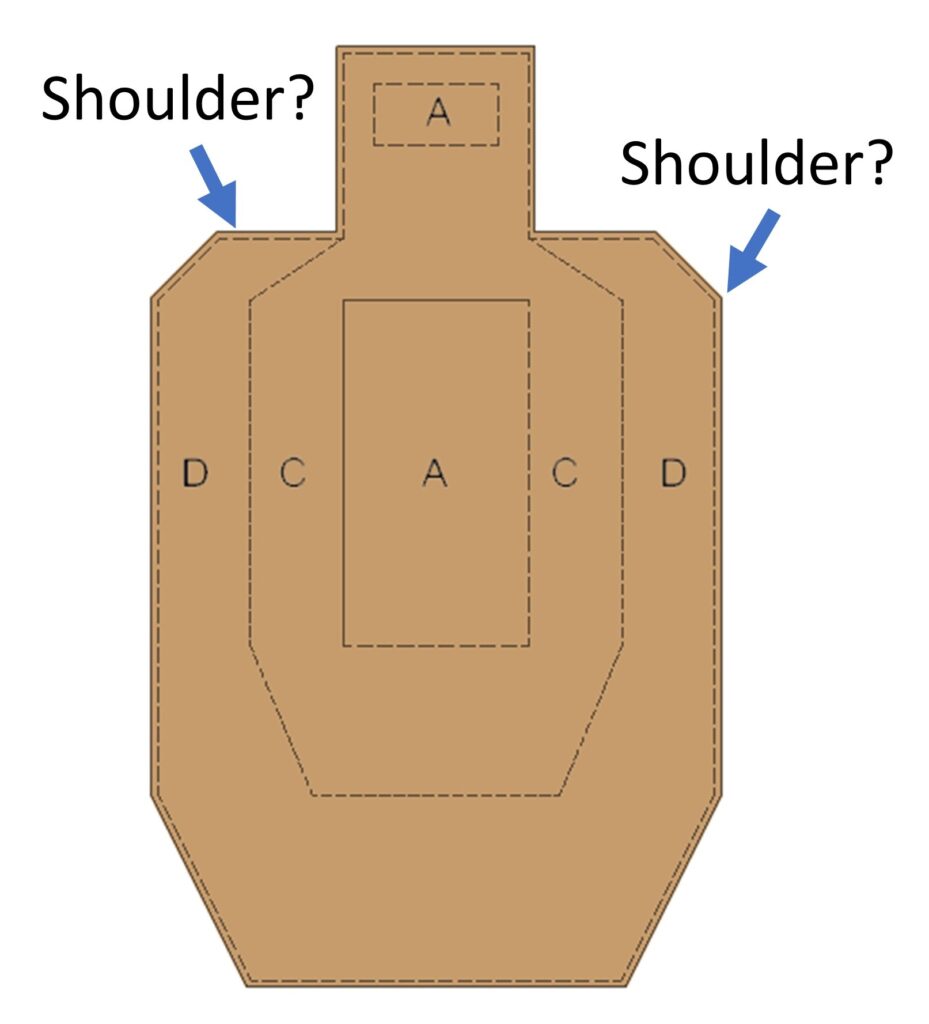Every once in a while you get a question and just have to go hmmmm? Recently during set-up at an all classifier match, the issue of what is the shoulder of a USPSA cardboard target when the specified target height of “5 feet at the shoulder” is used. If you think about it, there could be two answers. Is shoulder height the top of the main body of the target or is the shoulder where the lateral edge of the target breaks down at an angle? I would guess most people would say the former rather than the latter example but is it as cut and dried as that?

On closer examination of the classifier sheet it clarified that it meant the top of the body of the target, however it might not be as specific on another stage diagram. It might just state 5 feet at the shoulder or may not specify any height at all. I noted that on the IPSC targets it was 5 feet to the top of the target on another classifier set-up sheet.
Besides, where did 5 feet at the shoulder come from anyway? It is never specifically addressed in the rulebook, therefore there is no default height. I know for years at my home club we used 4-foot target sticks, so we used the top of the stick at the break when setting up targets. Since the height difference between the shoulder break and the top of the shoulder is only 1.9 inches (call it 2”) it still is only 4’2” to the top of the shoulder.
Upon discussion with some of the other instructors two issues came up. First, in some cases the height of targets may conflict with concerns with berm heights and impact areas. If for example a target, especially one with a limited scoring area such as a lower half hard cover/no-shoot array or upper A/C zone-only target is too high in relation to the back stop or side berm you could have rounds leaving the range. Is it acceptable to lower that target for safety purposes? The short answer is yes of course since safety is always paramount in all stage design. Rule 2.1.2 states courses of fire must always be constructed to ensure safe angles of fire. This does not just mean laterally but also vertically. In such a case, it would be acceptable to lower the potentially unsafe target to ensure safe bullet impacts on the berms if moving the array to a position where the impacts would not be an issue is impossible.
Secondly, if you end up having to lower or in some rare cases, raise, a targets height to deal with impact areas, how do you keep the competitive equity of the stage design? This is important in classifiers because the point is to use a standardized target array, so the scores can be used for classification. Again, in our discussion the consensus was what is more important is the lateral target transition distance rather than the actual target height. So, if you end up with the targets at 4’6” to the shoulder as long as the distances between targets is kept the same it basically presents the same shooting challenge.
Therefore, what height you set your targets is based on a number of factors. If safety is not an issue and the height is specified (like on a classifier) then use the height specified. If the height is not specified use the height which allows the greatest flexibility consistent with safety. If you need to adjust a specified height due to safety considerations, attempt to keep the lateral target transition distances as close as possible to the design.
As far as all targets must be at 5 feet at the shoulder is concerned, that is another old wive’s tale from the past. I would guess this came from some past practice in the distant past and has just carried on.